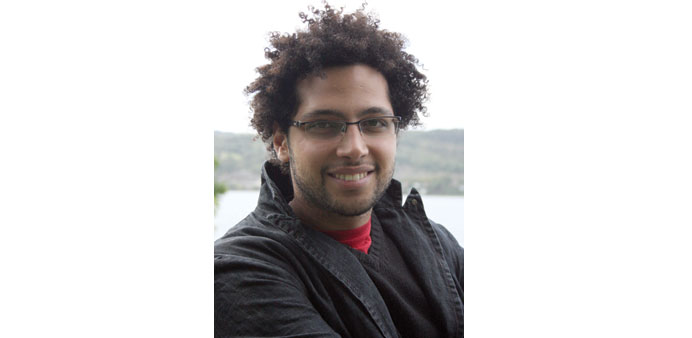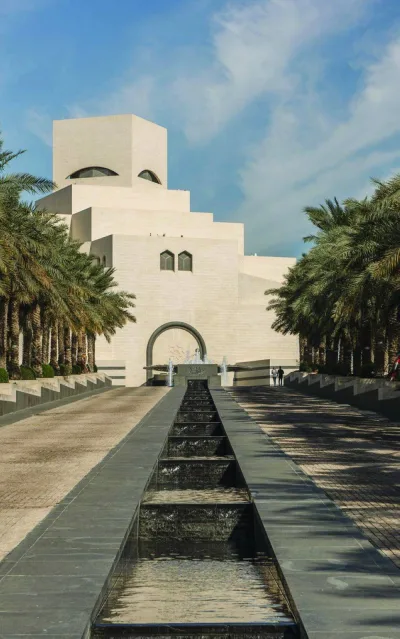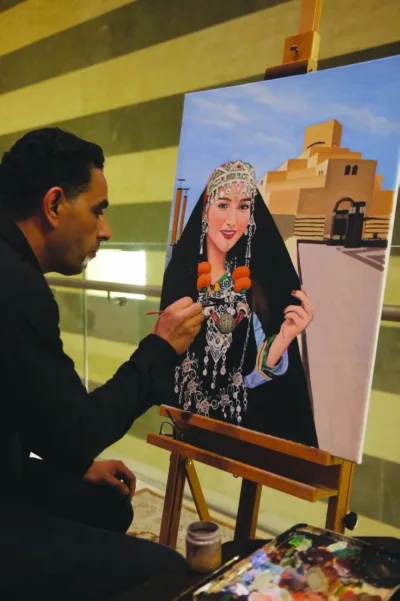Palestinian scholarship student Bisan Abu Eisheh
makes his mark in London through his unique
exhibits. By Denise Marray
|
|
When ordinary household objects are taken out of context and displayed under glass as exhibits in an art gallery, they look alien and misplaced. But each of these simple utensils has a history and when the history is told they acquire a quite unexpected poignancy.
Bisan Abu Eisheh is the young Palestinian artist who made it his business to collect the objects from the rubble of houses bulldozed by the Israeli authorities as illegal structures built without planning permission. So the objects taken from demolished houses are symbolic of shattered family homes and who knows what heartbreak, anger and despair they represent.
“The house demolitions are part of an Israeli government plan to minimise the percentage of Arabs who live in the city of Jerusalem and accommodate the settlements which are expanding,” he explains.
Bisan is a Palestinian conceptual artist who is the first recipient of a scholarship awarded by the Caspian Arts Foundation. The foundation is a not-for-profit organisation set up to provide scholarships for students from the Mena (Middle East and North Africa) region who wish to pursue their post-graduate studies in Fine Arts, Film Photography or Fashion at one of the leading colleges that comprise the University of the Arts London.
Bisan is now undertaking a two year MA in Fine Art at Central Saint Martins College of Art and Design in London. He recalled the moment when he was told he had been awarded the scholarship. “It was a real pleasure and honour for me,” he says.
On arriving at St Martins he became even more appreciative of the excellent grounding in the arts he had received at the International Academy of Art in Palestine. “It was a very good four years preparation for me and I was very proud of my background because it was very diverse and we were introduced to lots of concepts and ideas and received many tutorials from visiting artists,” he explains.
At St Martins he appreciates the vast resources and opportunities for attending workshops in many subjects including video, sound recording, woodwork and metalwork. He also finds London inspiring. “London is an MA in itself with all its rich cultural and historical resources and archives,” he says.
However, studying at St Martins as one of a 4,500 strong student body representing top talent from around the world makes him aware that to succeed as an artist requires many skills including how to manage your time and career. “It’s a great challenge; you need to fight for your tutorials. You are not that spoiled. It prepares you well for the art world because it’s a tough environment – it’s an ocean – you can’t take a break,” he says.
Bisan admits that his experience of growing up in Palestine has strongly influenced his work. “I like art that has a message. Maybe I am very much affected by my background and feel responsible to say something,” he reflects. His father, a theatre playwright, TV presenter and director was imprisoned from 1980 to 1983 for his role in fighting against the occupation.
Bisan’s wearying experience of crossing checkpoints as part of his daily routine in Jerusalem has left its mark. But he has taken this exasperation and tried to shape it into something transforming through his art. So it was that visitors to the Victoria and Albert Museum in London recently had the experience of going through ‘border controls’ to enter the Middle Eastern section which was cordoned off by volunteers for the purpose.
They found themselves participating in one of Bisan’s performance art concepts which afforded a completely new interpretation of the usual process of applying for and being granted access through the issuing of permits. Instead of being asked to fill in a form under the usual categories, visitors were asked to describe themselves as they wished. They were given access on the basis of how they represented themselves as individuals.
“I guaranteed them access according to what they wanted and their understanding of their selves; not according to how I wanted to see them,” Bisan explains.
He is also working on a project undertaken jointly by Art School Palestine, the Delfina Foundation and the British Council, which will be exhibited at the Institute of Contemporary Arts in London in June. The basis for the project is a Travel Guide on Jerusalem, published by Eyewitness, which Bisan in conjunction with others is ‘editing’ in order to give a more accurate impression of the city.
“I bought the Travel Guide here in England and it almost totally ignores any Palestinian existence or narrative. I used ‘post-it’ notes and transparencies overlaid over maps to fill in the missing information,” Bisan says.
He then sent the book to Ramallah and asked people to interact with it and add their own contributions. When it is returned to him he will transform it into another art medium, possibly using video.
Clearly there is a political dimension to his work; his frustration with the guidebook is evident.
“This book is 90% guiding you to Israel – it’s a totally Israeli narrative. Even when describing the souk in the old city of Jerusalem it says that if you are interested in buying things the modern malls in the West side of the city have more to offer. It’s like they are saying: ‘You can go and look but we don’t really advise you to buy anything or spend money over there’,” he comments.
Nina Mahdavi, Founder and Chair Trustee of the Caspian Arts Foundation, is motivated to assist talented artists from the Mena region to reach their full potential.
She was born in Iran but her family left during the revolution and she was educated in Europe and the US. Her career background is in property investments and she describes art as “my personal passion”.
She is impressed with the talent and creativity in the Mena region, and through fund raising and corporate sponsorship intends to expand the scholarship programme, which is open to all regardless of nationality or religious background. She aims to offer practical support for students after they graduate and have to find their feet in the intensely competitive art world.
“We’re trying to partner with different institutions to give a platform to students after they graduate through residencies or internships or participation in exhibitions,” she says. She also emphasises the importance for students to understand the commercial aspect of their careers which can be very challenging.
Partners include Christie’s, the Delfina Foundation, Sotheby’s, the Lahd Gallery and the University of the Arts London which includes Central Saint Martins, the London College of Fashion, Camberwell College of Arts, Wimbledon College of Art, London College of Communication and Chelsea College of Art and Design.



